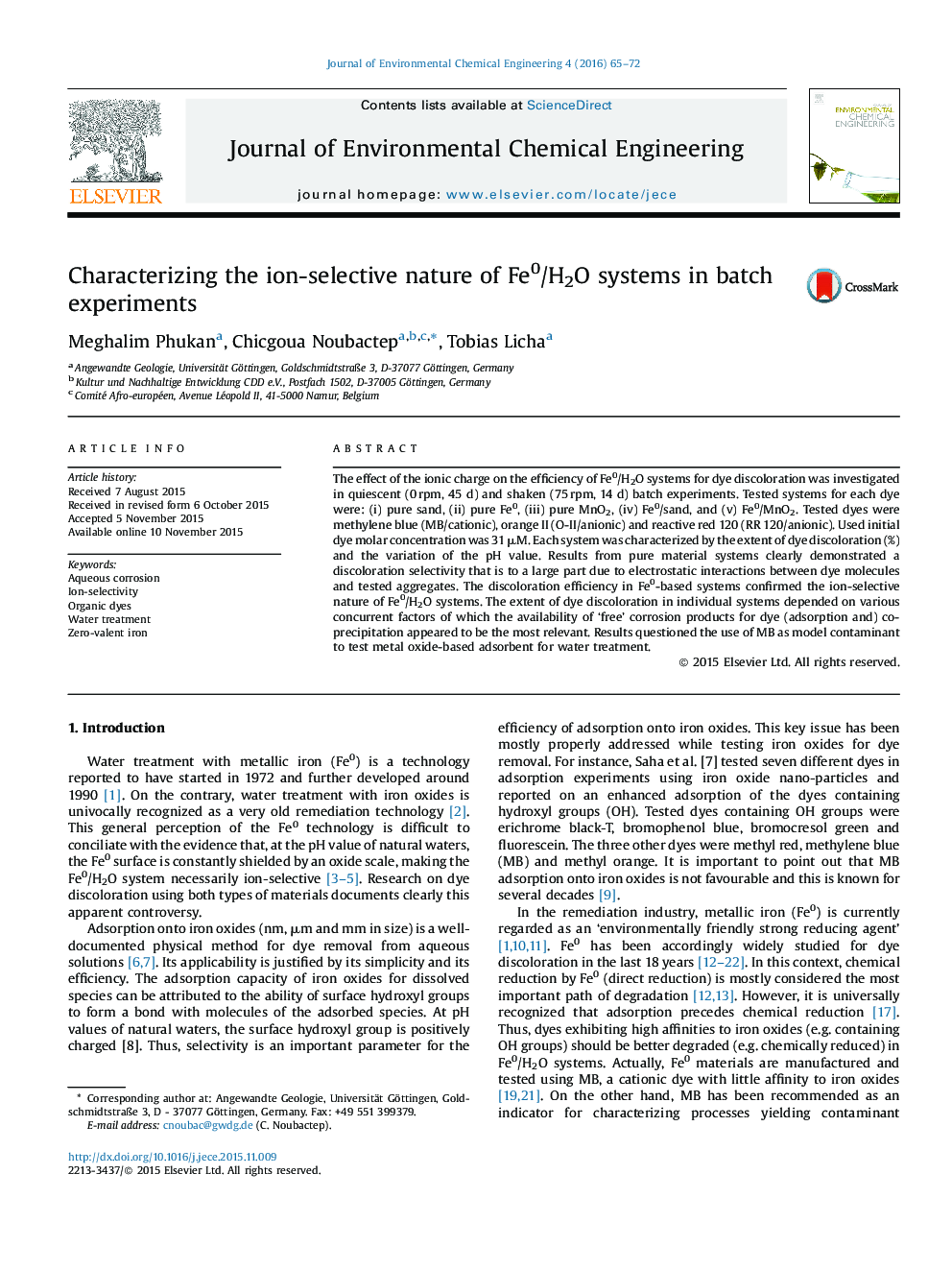| کد مقاله | کد نشریه | سال انتشار | مقاله انگلیسی | نسخه تمام متن |
|---|---|---|---|---|
| 221860 | 464267 | 2016 | 8 صفحه PDF | دانلود رایگان |
• Corrosion products (CP) are essential for efficient Fe0/H2O systems.
• CP availability is controlled by admixing various levels of granular sand and MnO2.
• Dye discoloration in Fe0/H2O systems is charge-selective.
• Anionic orange II is better discoloured than cationic methylene blue (MB).
• The suitability of MB discoloration at characterizing Fe0/H2O systems is confirmed.
The effect of the ionic charge on the efficiency of Fe0/H2O systems for dye discoloration was investigated in quiescent (0 rpm, 45 d) and shaken (75 rpm, 14 d) batch experiments. Tested systems for each dye were: (i) pure sand, (ii) pure Fe0, (iii) pure MnO2, (iv) Fe0/sand, and (v) Fe0/MnO2. Tested dyes were methylene blue (MB/cationic), orange II (O-II/anionic) and reactive red 120 (RR 120/anionic). Used initial dye molar concentration was 31 μM. Each system was characterized by the extent of dye discoloration (%) and the variation of the pH value. Results from pure material systems clearly demonstrated a discoloration selectivity that is to a large part due to electrostatic interactions between dye molecules and tested aggregates. The discoloration efficiency in Fe0-based systems confirmed the ion-selective nature of Fe0/H2O systems. The extent of dye discoloration in individual systems depended on various concurrent factors of which the availability of ‘free’ corrosion products for dye (adsorption and) co-precipitation appeared to be the most relevant. Results questioned the use of MB as model contaminant to test metal oxide-based adsorbent for water treatment.
Journal: Journal of Environmental Chemical Engineering - Volume 4, Issue 1, March 2016, Pages 65–72
